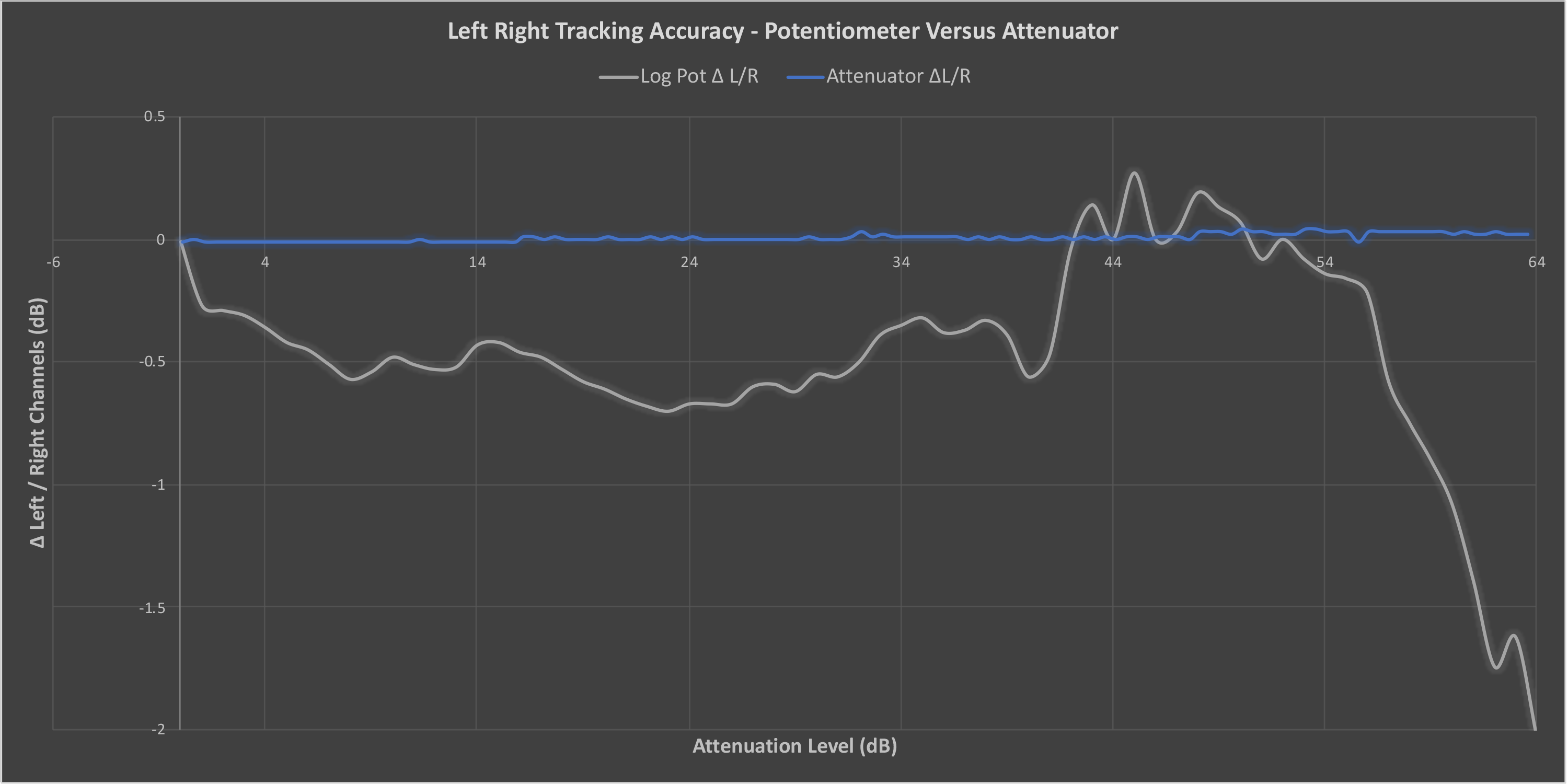The volume control on your amplifier looks like a fairly harmless piece of kit, doesn’t it. You just turn the dial until you find a level you want and that’s it. But it can have a very significant impact on the quality of the sound you get from the speakers, and I’m not just talking about the loudness.
If your amplifier uses a potentiometer to control volume then sonically the best place for it to be set is at maximum. In this position the wipers inside will make the best contact and both channel outputs will be well-matched. If you have a high-powered amp and speakers then this might not be the best idea for you or your neighbours.
So, most of the time we listen with the volume turned down a fair bit and this is where the shortcomings of a potentiometer may become noticeable. We’ve all heard a crackly volume control at some point or other, usually due to age or dust ingress; however even a brand new potentiometer has an audible impact on the sound quality you hear and this is because of limitations inherent in the design. The most significant problem for me (and the reason that I don’t use potentiometers as volume controls) is the poor matching of levels between the left and right channels. If left and right channels aren’t closely matched then the stereo image can move off centre when the volume is changed.

As an experiment I measured the performance of an industry standard and highly rated 10k log potentiometer. The graph above shows the difference between left and right channel levels with the potentiometer results plotted as a grey line. You can see that between about 4 and 40dB attenuation the right channel is around half a decibel lower than the right, then there’s a ‘sweet spot’ between 40 and 50dB after which the level matching falls off a cliff. This is actually pretty impressive performance for a pot and shows why it is such a popular and well regarded model.
In contrast the blue line plots the tracking accuracy of the Pre 1 attenuator, the 0.1% tolerance resistors keep the left and right levels to within 0.05dB of each other.
Okay… so what does this mean?
- Potentiometers work best when at or close to maximum volume
- It may pay to re-adjust the panning after changing the volume level using a pot.
- Switched or stepped attenuators are vastly superior to potentiometers when used as volume controls and left-right channel matching is one of the key benefits.
